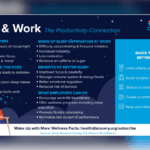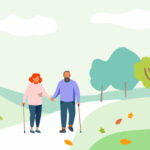We often lament worsening eyesight as just part of “getting old,” and while our eyes do change with age, vision loss is not something to be ignored. As life expectancy increases and the American population ages, experts are predicting vision loss and blindness to become increasingly prevalent and serious health issues. Many of the most prevalent eye diseases—and most common causes of vision loss and blindness—don’t have any symptoms until they’ve progressed. While treatment can slow disease advancement, it can be difficult to restore lost vision. This makes early detection of these three eye diseases essential.
The eye is an amazing and complicated organ that relies on proper function of all its parts. These eye diseases each affect a different part of the eye, but all can lead to vision loss or blindness.
- Cataracts – Lens
The lens directs the light entering the eye on the retina. The lens begins clear, but around age 40, the proteins in the lens start to break down and clump together forming a “cataract” or cloudy area in vision. As the lens continue to break down, more cataracts can form obscuring more vision.
Cataracts can be treated relatively easily through surgery that replaces the clouded lens with an artificial one. Surgical cataract treatment is safe, efficacious and cost-effective, ultimately providing value through the relieved burden vision loss would cause. Despite being a common surgery, many Americans still live with vision loss from cataracts due to not getting eye exams or not having health insurance. 1
More good news: A recent study linked moderate alcohol consumption with a lower risk of cataract surgery. The observed risk reduction was strongest with red wine (14%), leading researchers to suspect antioxidants may be a key factor. However, daily alcohol consumption of any type was linked to a six-percent increased risk of cataract surgery, so more study is needed.2
- Age-related Macular Degeneration (AMD) – Retina

The retina receives the light from the lens and converts it to information the brain can use. The macula is the middle area of the retina critical to processing central vision. Age-related macular degeneration (AMD) is the deterioration of
the macula as the eye ages. As the macula deteriorates, it becomes more difficult to see details and straight ahead which can cause severe impairment, though AMD doesn’t cause complete blindness.
The primary risk factor for AMD is simply age: People over age 60 are more likely to have AMD and it’s a leading cause of vision loss for people age 50 and older. Smoking, Caucasian ethnicity and family history also increase the risk for AMD.3 From 2000-2010, the number of Americans with AMD grew 18 percent, from 1.75 million to 2.07 million, and is expected to more than double to 5.44 million by 2050. 4
Doctors are still working to fully understand the causes of AMD. In addition to age, there may be a genetic cause, and new research suggests environmental causes as well. A 2021 long-term study from University College London identified a link between air pollution and AMD. Air pollution is increasingly understood as a significant public health risk, and researchers found that people in areas with higher levels of air pollution were more likely to report having AMD. While the role air pollution plays in causing or worsening AMD still isn’t known, they think increased stress or inflammation may be to blame.5
There is currently no cure for AMD and no way to restore lost vision. Treatment is focused on slowing disease progression and preventing further sight loss. The National Eye Institute’s research has developed a daily high-dose vitamin and mineral formula that can slow AMD progression which includes vitamin C, vitamin E and zinc, among others. Similarly, a healthy diet may reduce the risk of developing AMD. 6
- Glaucoma – Optic Nerve
The optic nerve carries the information formed by the retina to the brain for processing. Glaucoma causes the pressure inside the eye to increase, eventually pinching and damaging the optic nerve. This can interrupt the information coming from the lens and retina getting to the brain leading to vision loss and blindness.
Half of people with glaucoma do not know they have this eye disease.
At first, glaucoma doesn’t usually have any symptoms, and the gradual vision loss may be difficult to notice. The only way to diagnose glaucoma, especially early glaucoma when it is most treatable, is to get a comprehensive eye exam. Unlike AMD which reduces central vision, glaucoma vision loss starts around the outside with peripheral vision loss, and this can progress to full blindness if left untreated. Glaucoma is also a leading cause of blindness in the U.S., along with AMD and cataracts.
The precise cause of glaucoma remains unknown and there is no way to prevent it from developing. Risk factors include being age 60 or older, African American or Hispanic/Latino ethnicity and a family history of glaucoma. 7
There’s no cure for glaucoma and lost vision cannot be recovered, but like the other eye diseases discussed, early treatment can often stop or slow progression and vision loss.
Eye Exams: The Best Defense
Vision is precious, and except for cataracts, once it is lost to disease, it cannot be recovered. The best way to reduce the risk of vision loss and blindness with all three of these eye diseases is to get regular eye exams according to age and doctor recommendation.
1 National Eye Institute, “Cataracts”
2 American Academy of Ophthalmology, “Drinking Wine May Help Protect Against Cataracts”
3 National Eye Institute, “Age-related Macular Degeneration”
4 National Eye Institute, “Age-Related Macular Degeneration (AMD) Data and Statistics”
5 British Journal of Ophthalmology, “Association of ambient air pollution with age-related macular degeneration and retinal thickness in UK Biobank”
6 National Eye Institute, “Nutritional Supplements for Age-Related Macular Degeneration”
7 National Eye Institute, “Glaucoma”












